Affiliate links on Android Authority may earn us a commission. Learn more.
Galaxy Buds 2 Pro vs Galaxy Buds 2 vs Galaxy Buds Live: In-depth comparison


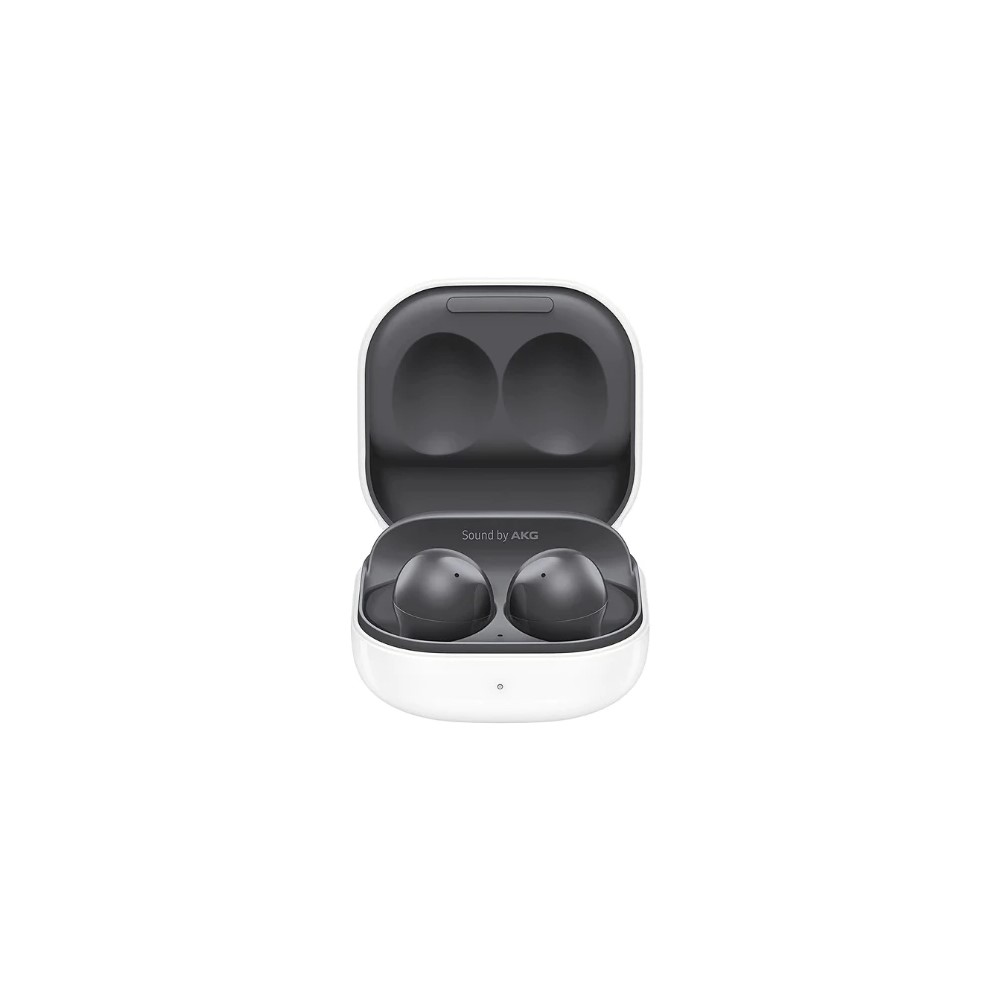


The Samsung Galaxy Buds lineup of active noise canceling (ANC) wireless earbuds can be confusing. Let’s compare and contrast the Samsung Galaxy Buds 2 Pro, Galaxy Buds 2, and Galaxy Buds Live to see which buds are best for you.
Samsung Galaxy Buds 2 Pro vs Galaxy Buds Live vs Galaxy Buds 2: At a glance

The bean-shaped Samsung Galaxy Buds Live first hit store shelves on August 21, 2020. A year later, on August 27, 2021, the company released the Galaxy Buds 2. These sealed earphones set the stage for the Samsung Galaxy Buds 2 Pro release on August 28, 2022.
The Galaxy Buds Live are Samsung’s only ANC open ear headphones. These bean-shaped buds don’t seal the ear canals. Instead, the speakers hover above your ear canals and miniature removable wingtips secure the buds. In this instance, ANC is not meant to mute your surroundings like the Buds 2 and Buds 2 Pro, but to reduce the loudness of distracting sounds.
The Galaxy Buds 2 are a great mid-tier option for Samsung and Android phone owners. These buds come with interchangeable ear tips and great ANC for their price. Comfort is no issue with the Buds 2, and the Galaxy Wearable app adds plenty of utility. For most people, the Buds 2 offer the best value.
Then you have the latest and greatest Galaxy Buds 2 Pro. These buds have some of the best ANC around. You also get 24-bit audio over the Samsung Seamless Codec (One UI 4.0+). Thanks to head tracking, these earbuds have the most immersive spatial audio effect, something the other Galaxy Buds lack. With an IPX7 rating, the Galaxy Buds 2 Pro can resist submersion, making them much more durable than their IPX2-rated kin. All these features raise the total quite a bit.
No matter which earbuds you get, Samsung provides a wireless charging case. All earbuds feature touch controls and offer a similar experience through the Galaxy Wearable app on Android.
Samsung’s Galaxy Buds tend to go on promotion quite often. You may be able to find any of the company’s earphones for a bargain.





Are the Samsung Galaxy Buds 2 Pro, Galaxy Buds 2, and Galaxy Buds Live worth buying?
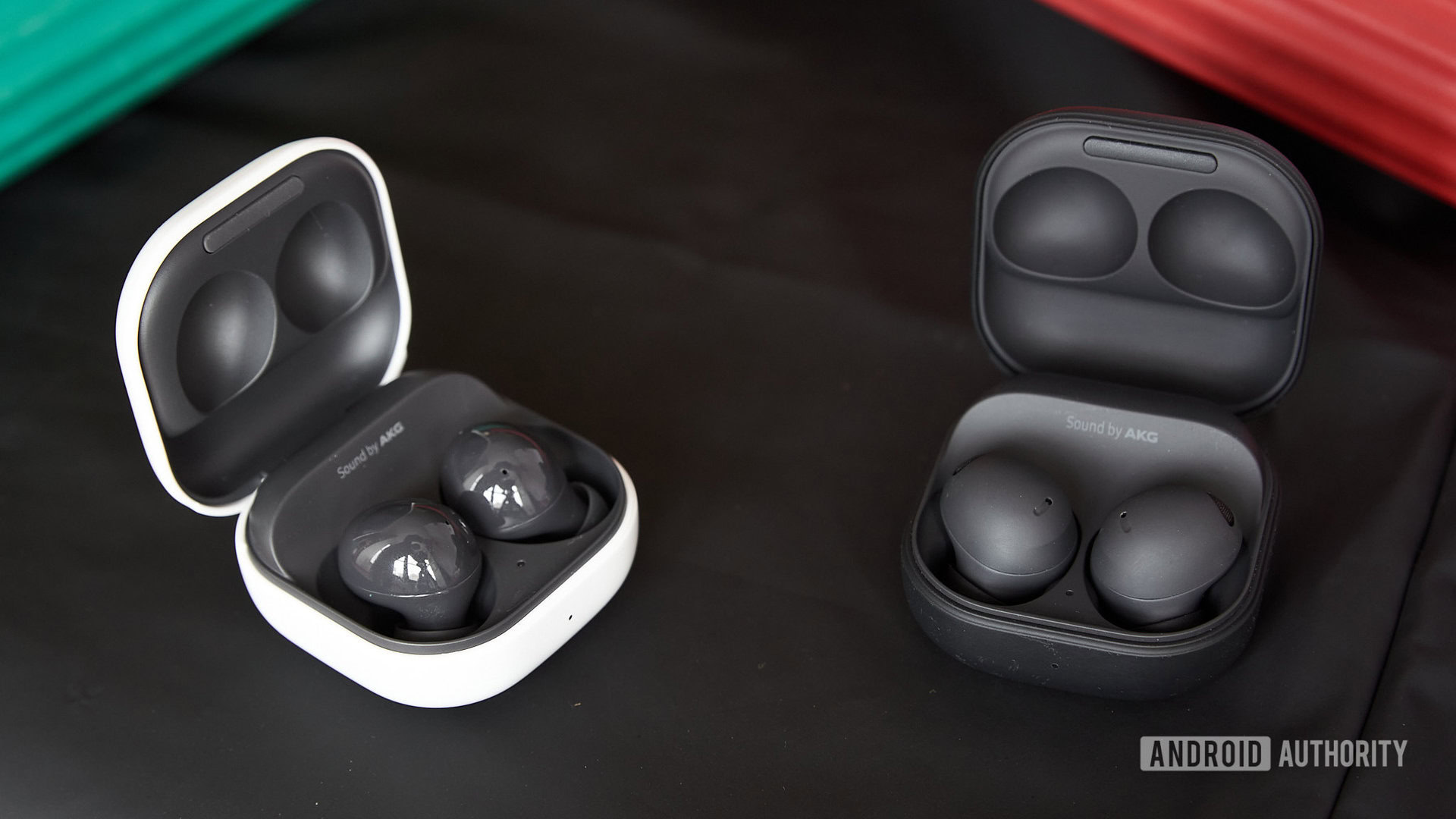
Any Samsung Galaxy Buds are worth buying for those who already own a Samsung smartphone. Like using AirPods with an iPhone, the Galaxy Buds integrate into Samsung’s ecosystem. Pairing Galaxy Buds to a phone like the Galaxy S23 Ultra allows you to use Samsung Dual Audio, automatic device switching, and 360 Audio. Audiophiles will appreciate the Samsung Scalable Codec too.
You can customize and enhance your Galaxy Buds experience in the Galaxy Wearable app. Even if you don’t want to fiddle with Galaxy Labs or remap some touch controls, Android phone owners will want this app for firmware updates. Samsung provides practical, long-term support to its earbuds. The company has added 360 Audio to the Galaxy Buds 2 and Galaxy Buds Live, as well as Spotify Tap to the original Galaxy Buds. More recently, Samsung added 360 Audio recording to the Buds 2 and Buds 2 Pro for phone videos.
The Buds 2 provide the most bang for your buck, and the Buds 2 Pro offer the most premium experience.
iPhone owners have the Galaxy Buds app for the Buds Live, and it leaves you with the basics. While all the Galaxy Buds can connect to an iPhone, it’s a barebones pairing that we don’t recommend.
For a standard fit and good to best-in-class noise canceling, grab the Galaxy Buds 2 or Buds 2 Pro. The company’s noise canceling gives companies like Sony and Apple some stiff competition. If you like hearing your surroundings and music simultaneously, try the Galaxy Buds Live.
Samsung Galaxy Buds 2 Pro vs Galaxy Buds 2 vs Galaxy Buds Live: What’s the difference?
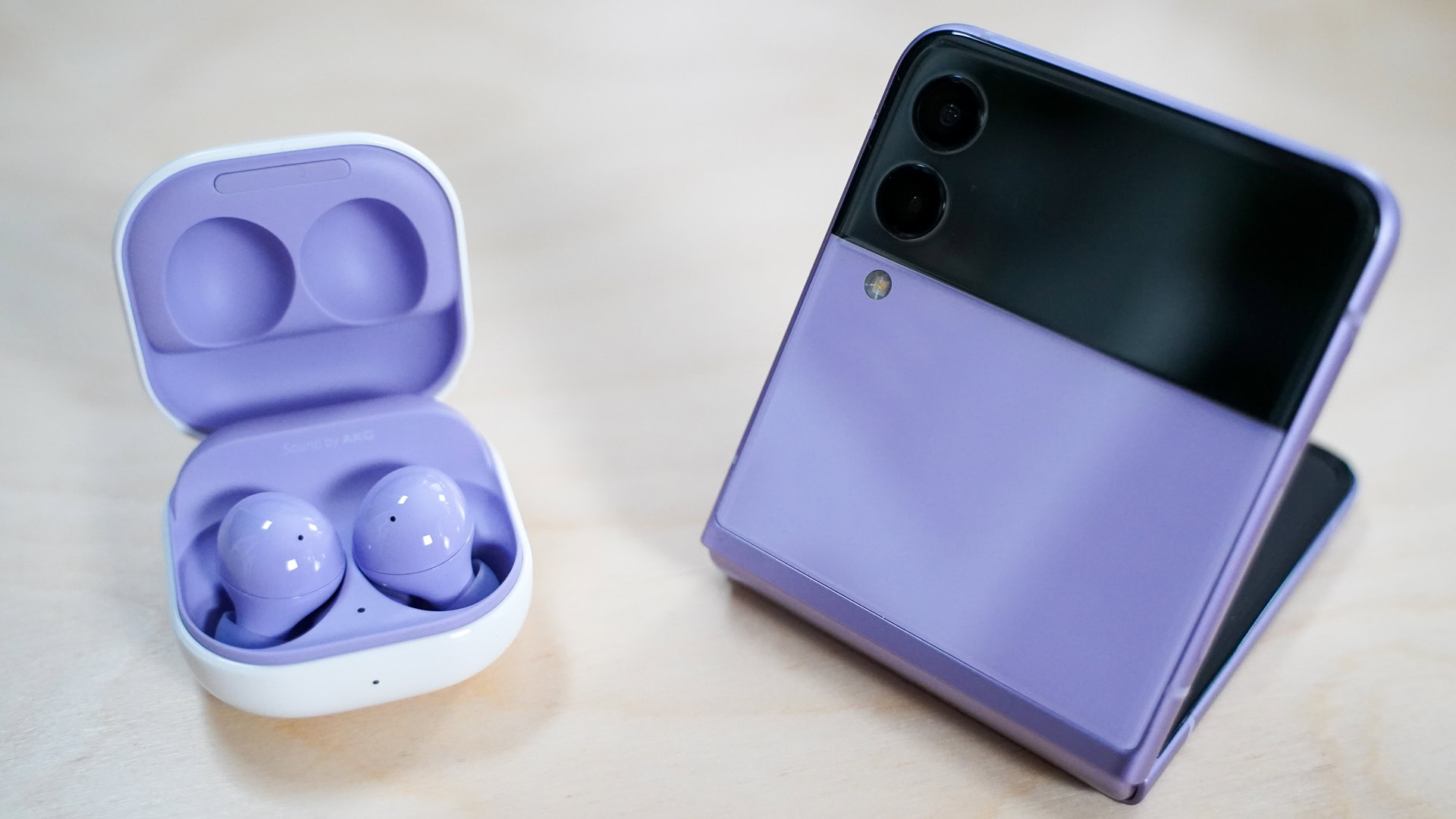
The Samsung Galaxy Buds 2 Pro are the premier Galaxy Buds. Active noise canceling outdoes other earbuds, and the mobile app brings a lot to the table. Don’t care for spatial audio with head tracking? Save a bit and get the Galaxy Buds 2 or the unsealed Buds Live. Keep reading to understand the biggest differences between all three Galaxy Buds below.
- Sound quality: The Galaxy Buds 2 sound the best out of Samsung’s earbuds. Bassheads will like how the Buds 2 Pro sound out of the box. Samsung’s Galaxy Buds Live sound good, but audio quality tanks when you listen in a noisy environment.
- Isolation: Samsung’s Galaxy Buds 2 Pro have some of the best ANC around, canceling out more low-frequency noise than the competition. Listeners will notice a real difference when toggling the Buds 2’s ANC on and off, but won’t notice much of anything with the Galaxy Buds Live.
- Spatial audio with head tracking: The Galaxy Buds 2 Pro are the only Galaxy Buds with spatial audio and head tracking. You can still enjoy Samsung 360 Audio with the Galaxy Buds 2 and Galaxy Buds Live, though.
- Dimensions: Each Galaxy Buds 2 Pro earbud measures 21.6 x 19.9 x 18.7mm and weighs 5.5g. The Galaxy Buds 2 are similar at 20.9 x 21.1 x 17mm and 5g per earbud. The Galaxy Buds Live are 27.3 x 16.5 x 14.9mm, and each bud weighs 5.6g.
- Battery life: The Galaxy Buds Live have the longest official battery life of six hours with ANC on. Meanwhile, the Buds 2 and Buds 2 Pro last five hours with ANC on.
What experts are saying
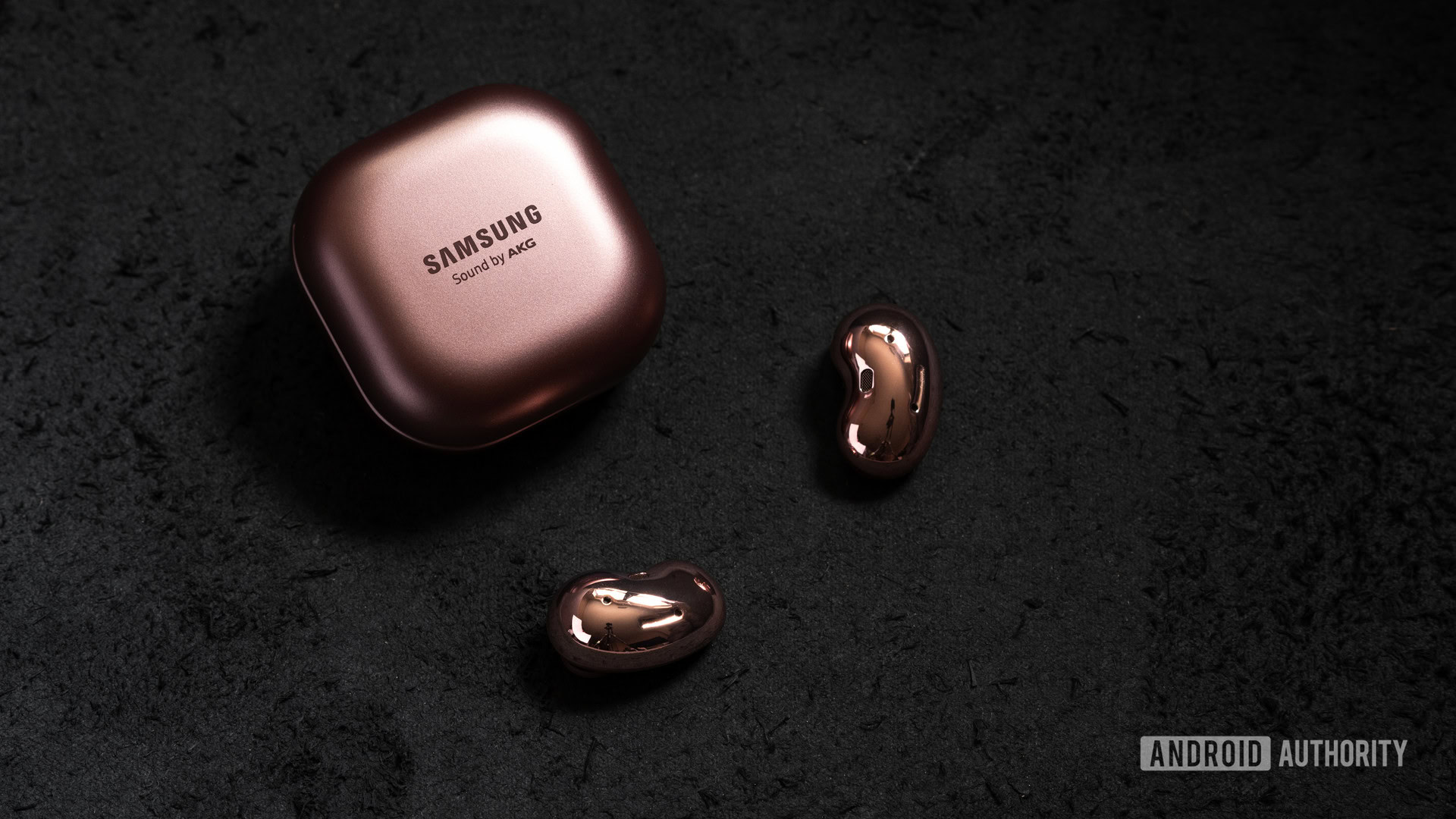
Perched right at the top of our recommendations, the Galaxy Buds 2 and Galaxy Buds 2 Pro are some of the best earbuds you can buy. For their respective price points, the Galaxy Buds 2 are hard to beat.
We praised the Galaxy Buds 2 Pro for their stellar noise canceling that mutes low-pitched sounds. Like the Galaxy Buds 2, the IPX7-rated Buds 2 Pro fit well and block out noise even when ANC is off. Samsung finally remedied its overly sensitive touchpads with the Buds 2 Pro. Unlike other Galaxy Buds, these don’t register a light graze as an intentional command. Samsung’s 360 Audio with head tracking is a nice touch too.
The Galaxy Buds 2 are a simplified version of the Buds 2 Pro. Sure, the Buds 2 ANC performance isn’t as good as the Buds 2 Pro, but it still makes a difference when commuting. Sound quality is great out of the box. Few listeners will feel compelled to play around with the EQ presets in the Galaxy Wearable app. Samsung added 360 Audio to the Buds 2 in a firmware update, giving it an edge over other earbuds in the same price range. While the meager IPX2 rating isn’t impressive on paper, the buds survived plenty of sweat and rainstorms during our review period.
That brings us to the Galaxy Buds Live, which keep you cued into your surroundings at all times. While the unsealed fit doesn’t do sound quality any favors, we admit the Buds Live sound good at home or in a library. The buds’ noise canceling won’t blanket you in silence, but it’s not supposed to. Samsung’s interchangeable wing tips may be small, but they do their job. Although the fit felt precarious during our review, the buds always stayed in place while exercising. These are the only Samsung buds of the bunch to work with the Galaxy Buds app for iOS.
The unsealed Galaxy Buds Live have noise canceling but it won't mute your surroundings like the Buds 2 Pro.
All the Galaxy Buds work with Samsung Find My, which is an underwhelming experience. The location tracking feels elementary compared to Apple and even Google. Only Samsung Galaxy phone owners can use certain features like Samsung Dual Audio, Samsung 360 Audio, and streaming over the Samsung Seamless/Scalable Codec. You still get access to plenty of features when pairing the Samsung Galaxy Buds with an Android phone, though.
What other reviewers from around the web think
To give you a broader perspective of Samsung’s earphones, we looked at what reviewers from other publications think about the Galaxy Buds series.
- Jason Cipriani from ZDNET says the Buds 2 Pro are the best wireless earbuds for Galaxy phone owners. The earphones’ comfort, noise canceling, and Samsung device integration make them an easy recommendation. The main flaw Cipriani found is that the battery life only lasted about three hours with ANC on, which is much shorter than the specified five hours.
- Chris Welch from The Verge thinks that the Buds 2 improve upon the Buds Pro, thanks to the effective noise cancelation. But on the other hand, their auto-pause feature isn’t the best and the water resistance is minimal.
- Alex Bracetti from Tom’s Guide says that the Galaxy Buds Pro offer improved ANC, dynamic sound, and a few great exclusive features. Bracetti acknowledges the buds have their flaws and that some features are exclusive to Samsung.
- Sarah Saril from Business Insider thinks that the form factor of the Galaxy Buds Live, along with their glossy finish, is what separates them from the competition. She also liked the ANC but believes that they are not the most comfortable earbuds for smaller ears.
Specs
| Galaxy Buds Live | Galaxy Buds 2 | Galaxy Buds 2 Pro | |
|---|---|---|---|
Dimensions | Galaxy Buds Live Earbud: 27.3 x 16.5 x 14.9mm Case: 50.2 x 50.0 x 27.8mm | Galaxy Buds 2 Earbud: 20.9 x 1 x 721.1mm Case: 50.2 x 50.0 x 27.8mm | Galaxy Buds 2 Pro Earbud: 21.6 x 19.9 x 18.7mm Case: 50.2 x 50.1 x 27.7mm |
Weight (earbud) | Galaxy Buds Live 5.6g | Galaxy Buds 2 5g | Galaxy Buds 2 Pro 5.5g |
Bluetooth connectivity and codecs | Galaxy Buds Live Bluetooth 5.0 SBC AAC Samsung Scalable Codec (Samsung devices running Android 7.0+) | Galaxy Buds 2 Bluetooth 5.2 SBC AAC Samsung Scalable Codec (Samsung devices running Android 7.0+) | Galaxy Buds 2 Pro Bluetooth 5.3 SBC AAC Samsung Seamless Codec (One UI 4.0+) |
Water resistance | Galaxy Buds Live IPX2 | Galaxy Buds 2 IPX2 | Galaxy Buds 2 Pro IPX7 |
Fit type | Galaxy Buds Live Unsealed, open ear | Galaxy Buds 2 Sealed | Galaxy Buds 2 Pro Sealed |
Battery life | Galaxy Buds Live Earbuds, ANC on: 6 hours | Galaxy Buds 2 Earbuds, ANC on: 5 hours | Galaxy Buds 2 Pro Earbuds, ANC on: 5 hours |
Charging | Galaxy Buds Live USB-C Qi wireless Wireless PowerShare | Galaxy Buds 2 USB-C Qi wireless Wireless PowerShare | Galaxy Buds 2 Pro USB-C Qi wireless Wireless PowerShare |
Audio hardware | Galaxy Buds Live 12mm driver | Galaxy Buds 2 11mm driver 6.3mm tweeter | Galaxy Buds 2 Pro 10mm driver 5.3mm tweeter |
Sensors | Galaxy Buds Live Accelerometer Grip Hall Infrared Touch Voice Pickup Unit | Galaxy Buds 2 Accelerometer Gyro Hall Proximity Touch Voice Pickup Unit | Galaxy Buds 2 Pro Accelerometer Gyro Hall Proximity Touch Voice Pickup Unit |
Samsung 360 Audio | Galaxy Buds Live Yes | Galaxy Buds 2 Yes | Galaxy Buds 2 Pro Yes, with head tracking |
Active noise cancellation | Galaxy Buds Live Yes | Galaxy Buds 2 Yes | Galaxy Buds 2 Pro Yes |
Ambient aware | Galaxy Buds Live No | Galaxy Buds 2 Yes | Galaxy Buds 2 Pro Yes |
Colors | Galaxy Buds Live Mystic Blue Mystic Black Mystic Bronze Mystic Red Mystic White | Galaxy Buds 2 Graphite Lavender Olive Phantom Black White | Galaxy Buds 2 Pro Bora Purple Graphite White |
Original price (USD) | Galaxy Buds Live $169 | Galaxy Buds 2 $149 | Galaxy Buds 2 Pro $229 |
Performance
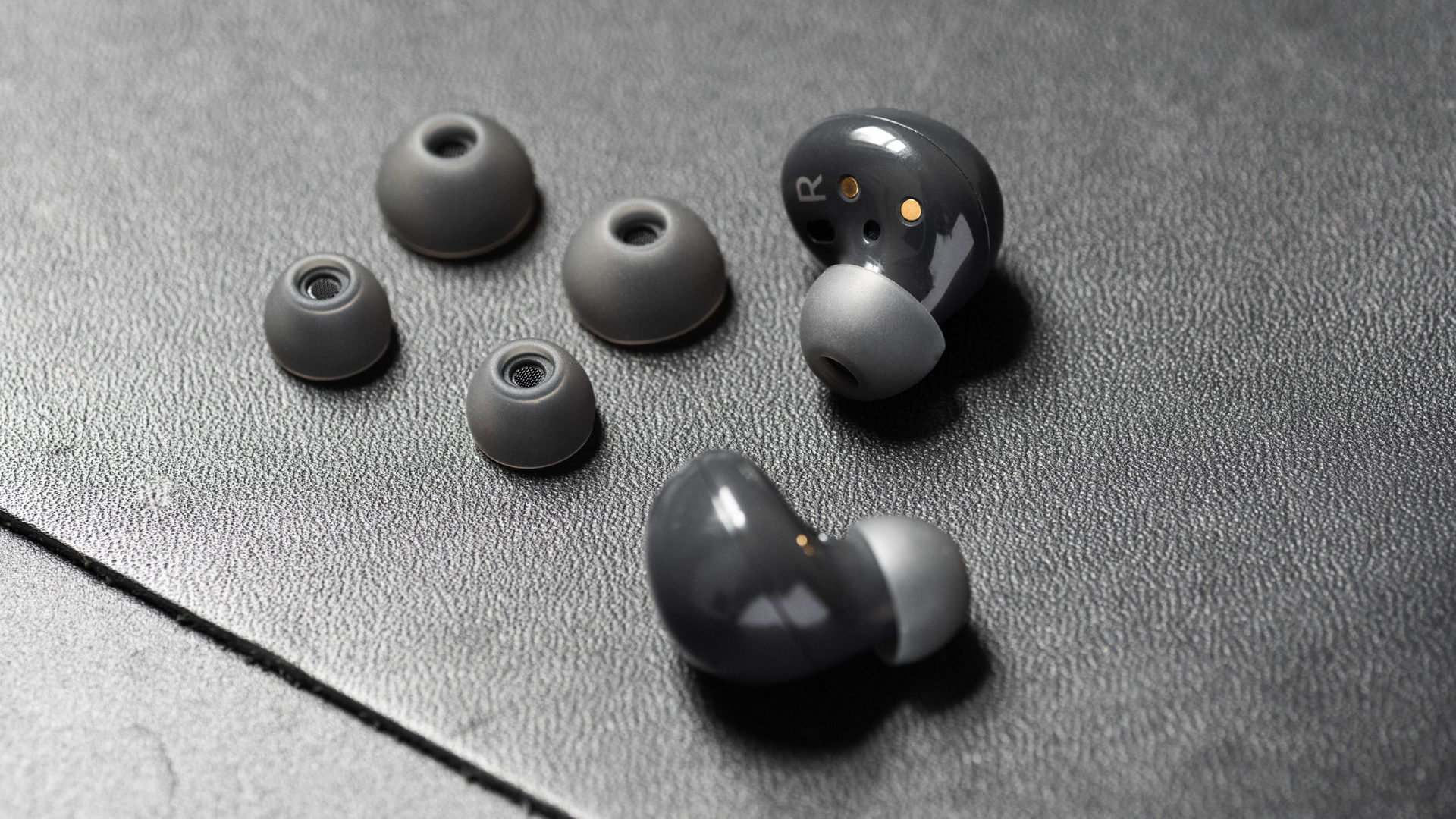
The Samsung Galaxy Buds 2 Pro, Galaxy Buds 2, and Galaxy Buds Live all share similar Samsung-exclusive features. When paired with a Samsung phone, you can use your voice to say, “Hey, Bixby.” Listeners also get one-step pairing on their Samsung phones without downloading any apps. They’re all preinstalled on your Samsung device.
If you’re entrenched in all things Samsung, the Galaxy Buds will work with Auto Switch (One UI 3.1+.) This means the Galaxy Buds will switch between audio sources without you intervening. For example, if you’re watching a video on your Galaxy tablet and a call comes through on your Galaxy phone, the Galaxy Buds will switch to your phone’s audio. This way, you can answer your call without getting up to locate your phone. For this to work, all Samsung devices need to be under the same Samsung account.
Samsung’s proprietary codecs are also exclusive to the company’s handsets. The Samsung Galaxy Buds 2 Pro support the Samsung Seamless Codec (One UI 4.0+.) With the Seamless Codec, you get 24bit/48kHz audio. Meanwhile, the Galaxy Buds 2 and Galaxy Buds Live work with the Samsung Scalable Codec. The Scalable Codec supports 24bit/96kHz audio with UHQ upscaling. With the Scalable Codec, audio quality ranges from 88-512kbps to balance connection stability and data transfer rates. Don’t let these numbers dizzy you.
Just because the earbuds can receive 24-bit audio, doesn’t mean it’s lossless 24-bit audio. Based on Bluetooth’s bandwidth limitations, it’s doubtful this is lossless audio. Bluetooth can only handle 16-bit lossless in specific circumstances. Galaxy devices are more likely to transmit lossy compressed audio to the Galaxy Buds. Since we can’t perceive anything greater than 16bit/44.1kHz, the 24-bit Bluetooth audio is more about marketing than sound quality.
Your Samsung Galaxy devices will send high-quality audio to your Galaxy Buds, end of story. Mobile gamers will notice the most benefit due to low latency streaming from either proprietary codec. You’ll need wired headphones for the highest audio quality and latency.
What is Samsung 360 Audio?
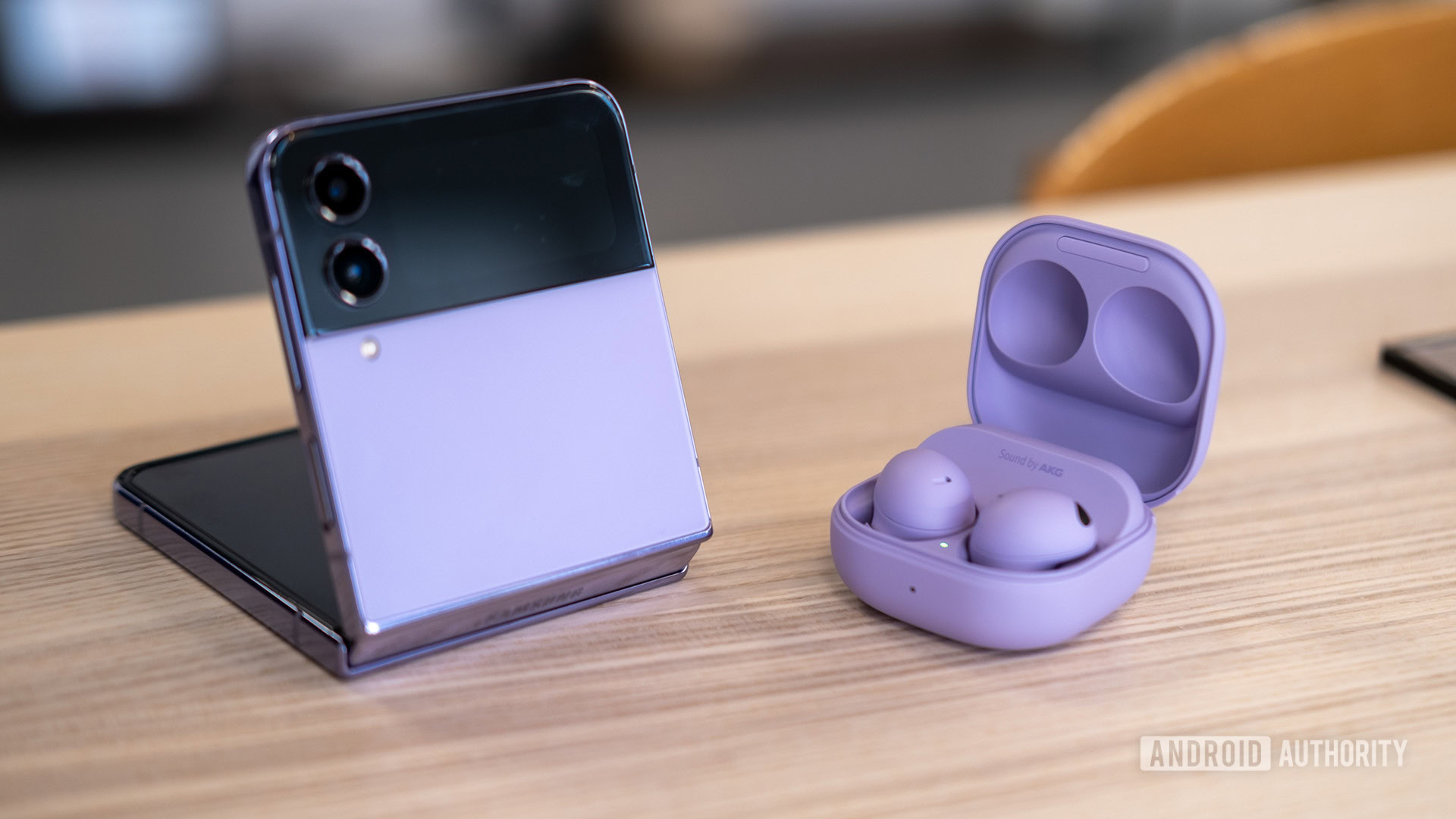
Yet another take on spatial audio, Samsung 360 Audio is advanced surround sound. Spatial audio adds dimension to your favorite TV shows and movies. Sound flies above you while panning from left to right, and you’re at the epicenter.
360 Audio with head tracking on the Galaxy Buds 2 Pro lets the buds communicate with your phone. The phone becomes an anchor for your media’s sound. As you turn your head relative to your phone, the audio changes. Rotating your head to the left will make audio louder through the right earbud. When rotating your face to the ceiling, it will sound as if the scene is below you. Unlike the AirPods with an iPhone, you don’t get 360 Audio personalization with the Galaxy Buds.
Only the Galaxy Buds 2 Pro have 360 Audio with head tracking.
To take advantage of Samsung 360 Audio, you’ll need a Galaxy device running One UI 3.1+. Oh, you’ll also need a compatible streaming service. Apple TV, Disney Plus, Hulu, and Netflix all house Dolby Atmos content. When streaming from these, make sure you’re selecting content mastered for Dolby Atmos.
The Galaxy Buds 2 Pro, Buds 2, and Buds Live all support spatial audio, but only the Galaxy Buds 2 and Buds 2 Pro can record 360 Audio sound while taking videos. This requires a Samsung phone running One UI 5.0 or later.
Do you need noise canceling?
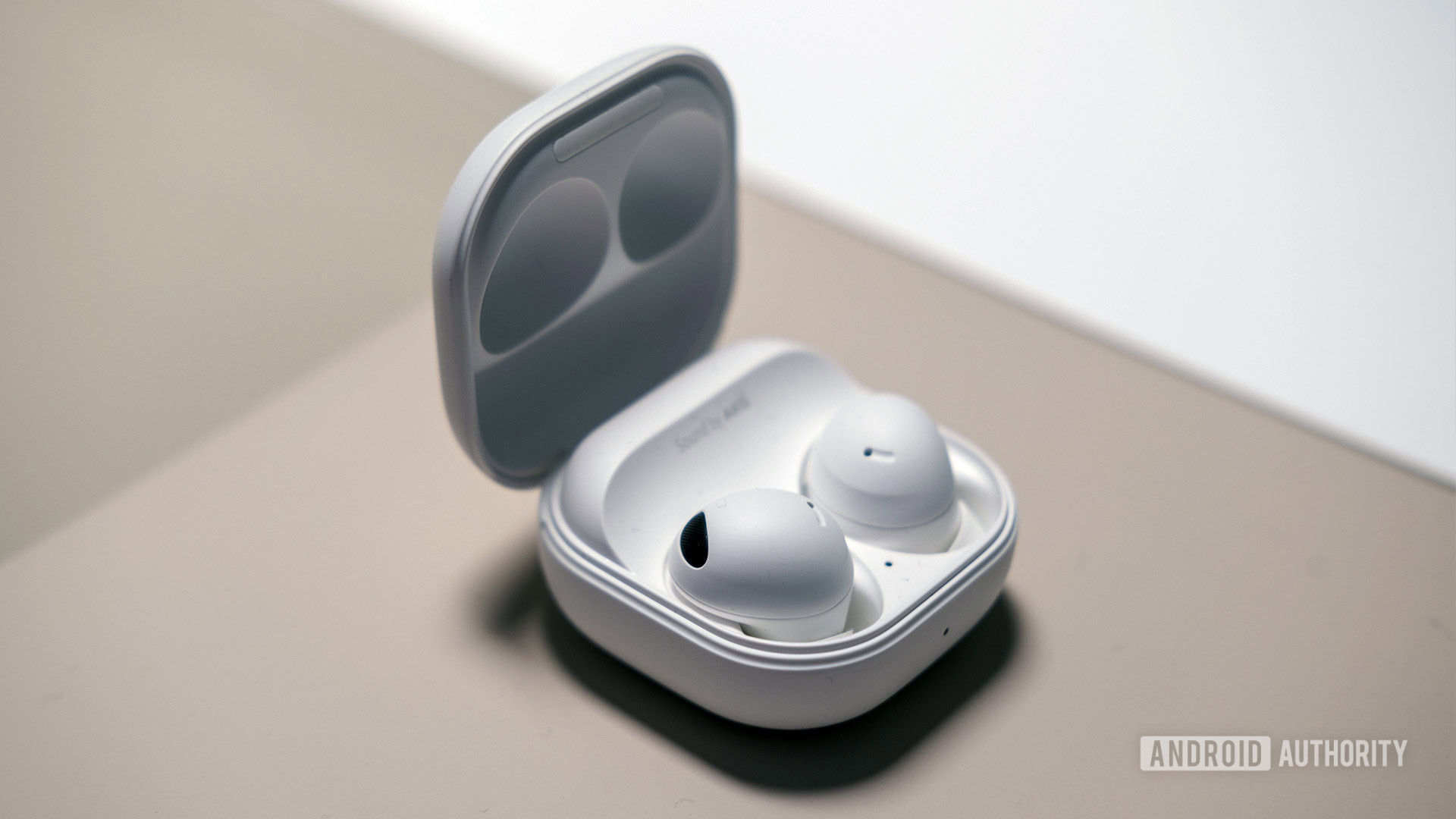
If you spend much of your week commuting or in loud spaces, the Galaxy Buds 2 Pro are the best. Samsung’s noise canceling silences low frequencies. With a good fit and ANC on, you’ll struggle to hear a train car’s loud, irritating sound. The mechanical sounds of doors as they open and close will also be a thing of the past. The Galaxy Buds 2 also have great ANC, but it isn’t as capable as the Pro model. You’ll still hear a laundry unit’s thuds and clunks with the Buds 2, but they’ll be less distracting.
We can’t forget about the noise canceling Samsung Galaxy Buds Live. Since these buds leave your ears unsealed, they lack isolation. You need good isolation for optimal sound quality and effective noise cancelation. So, why have ANC at all? ANC on the Buds Live attempts to lessen the harshness of distracting background noise, not mute it. The result is noticeable but ineffective. If you want open ear headphones, the Galaxy Buds are great earbuds — just don’t get them for their noise canceling.
Do the Samsung Galaxy Buds 2 Pro sound better than the Galaxy Buds 2 and Buds Live?
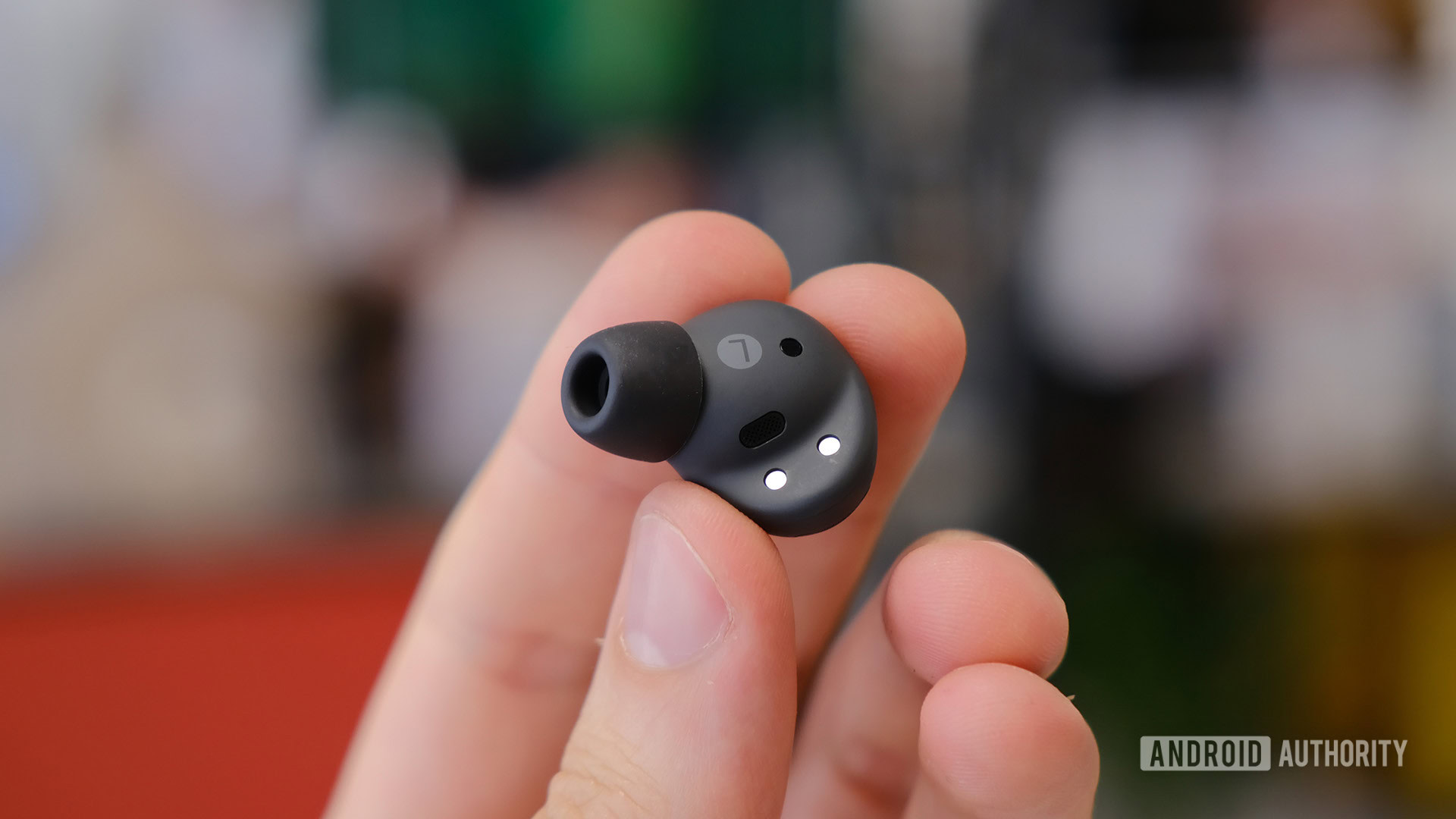
The Galaxy Buds 2 sound the best among Samsung’s earbud lineup. If you want to hear vocals, cymbals, triangles, and bass kicks from your music, the Galaxy Buds 2 can do it all. Bass heads will find the Galaxy Buds 2 Pro deliver more than the Buds 2 or Buds Live.
Then you have the Galaxy Buds Live. These earbuds sound good in ideal conditions, but you’ll struggle to hear any bass in loud spaces. The loud sounds of your environment make it hard to hear the quieter sounds of your music. This phenomenon is auditory masking. It happens because our brains can only process so many stimuli at once. You can experience auditory masking with sealed earbuds when they don’t fit well, but it’s most noticeable with open ear headphones.
The Samsung Galaxy Buds 2 have the best sound out of the box.
All three sets of Galaxy Buds come with EQ presets in the Galaxy Wearable app. The options are Normal, Bass boost, Soft, Dynamic, Clear, or Treble boost. We think most people will listen with the Normal or Dynamic EQ options. If you’re a Galaxy Buds Live owner who listens to music outside a lot, you might appreciate the Bass boost preset.
You can’t create a custom EQ from Samsung’s mobile app. Listeners who feel so compelled will have to venture out to third-party applications.
Which Samsung Galaxy Buds are the best for phone calls?
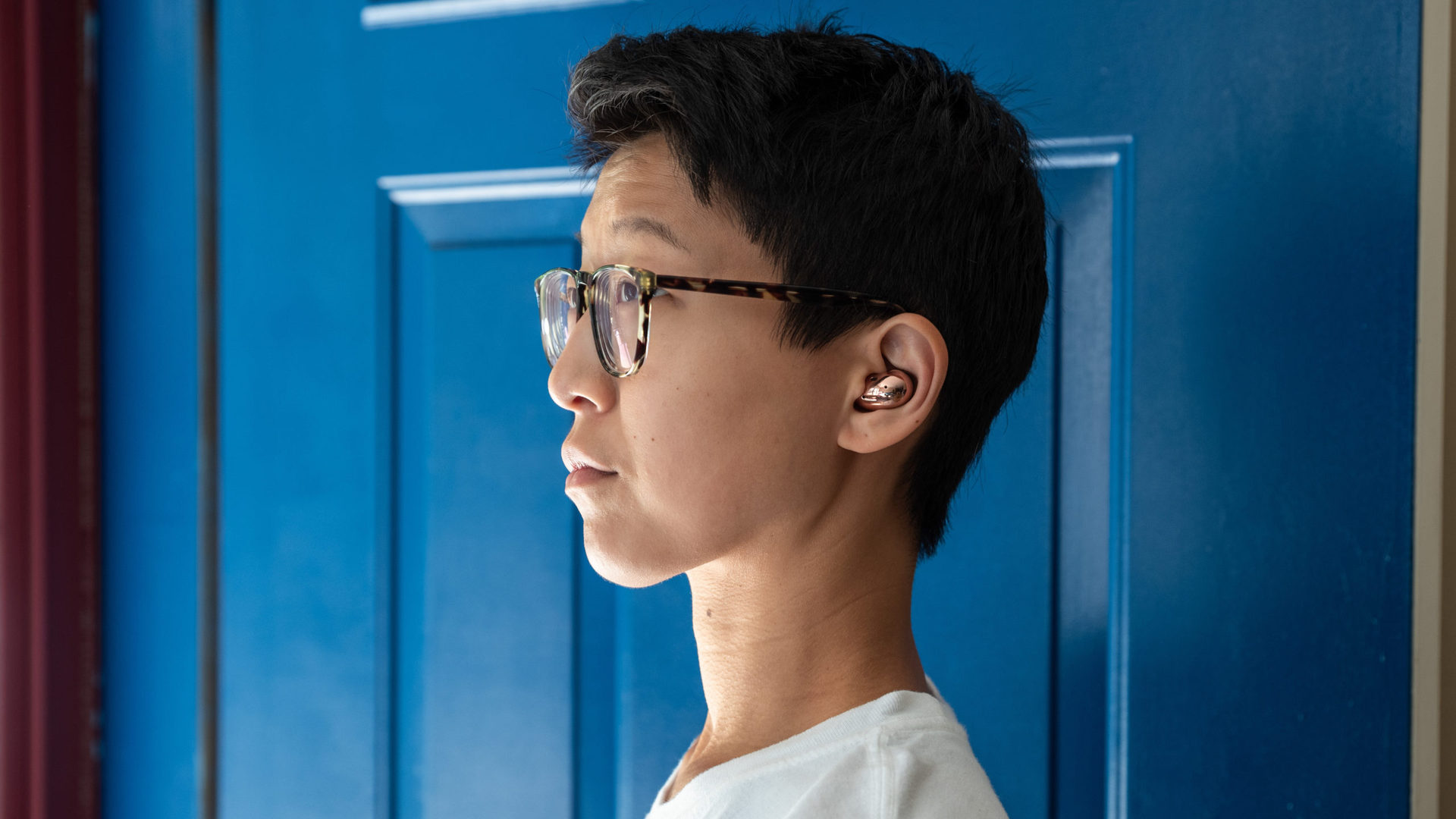
For the best microphone quality in any condition, get the Samsung Galaxy Buds 2 Pro. The Galaxy Buds 2 Pro, Galaxy Buds 2, and Galaxy Buds Live are all good for casual phone calls, but the Buds 2 Pro pull ever so slightly ahead.
Galaxy Buds 2 Pro microphone demo (Ideal conditions):
Galaxy Buds 2 microphone demo (Ideal conditions):
Galaxy Buds Live microphone demo (Ideal conditions):
In windy conditions, it becomes clear that the Buds 2 Pro have superior microphones. In the demos below, the Buds 2 Pro most effectively suppress background noise while relaying the speaker’s voice. Microphone quality in sub-optimal conditions only gets worse as you go down the line. The Buds Live are decent in windy conditions, but the person on the other end of the call may not hear every word you utter.
Galaxy Buds 2 Pro microphone demo (Windy conditions):
Galaxy Buds 2 microphone demo (Windy conditions):
Galaxy Buds Live microphone demo (Windy conditions):
Which Galaxy earbuds have the best battery life?
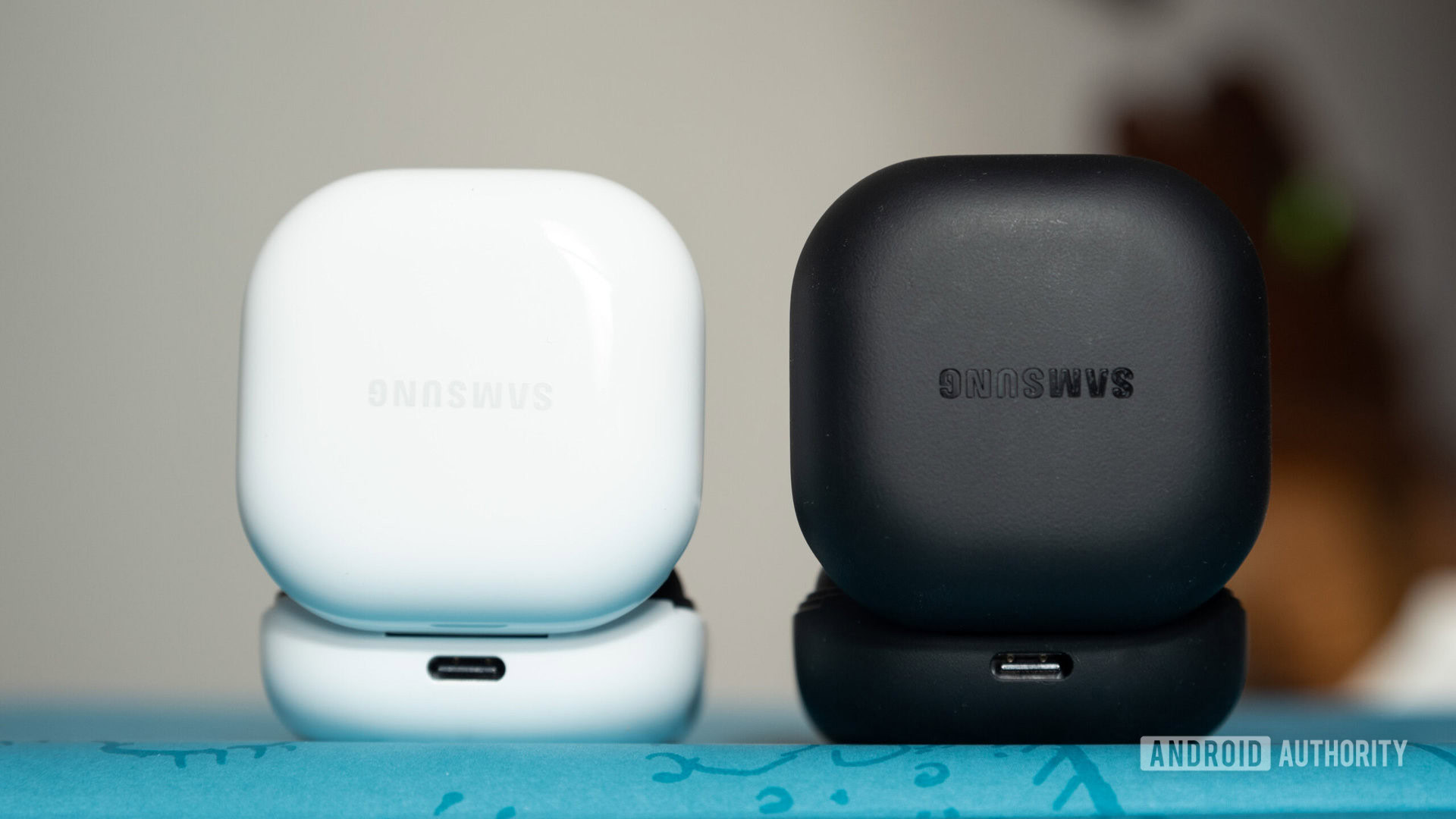
Officially, the Galaxy Buds 2 Pro and Galaxy Buds 2 have a five-hour battery life with ANC on. The Galaxy Buds Live last six hours with ANC on. Here are the battery results from our testing. We enabled ANC on each pair of buds and subjected them to a constant output of real music that peaked at 75dB (SPL).
- Galaxy Buds 2 Pro, ANC on: Four hours, 50 minutes.
- Galaxy Buds 2, ANC on: Five hours, three minutes.
- Galaxy Buds Live, ANC on: Five hours, 15 minutes.
The cases provide extra charge cycles for on-the-go listening. With ANC on, the Buds 2 Pro case provides an extra 18 hours of playtime, while the Galaxy Buds 2 and Galaxy Buds Live cases provide an extra 15 hours of ANC listening. Turning ANC off allots 30 extra hours from the Galaxy Buds 2 Pro case, and 29 extra hours from the Buds 2 and Buds Live cases.
Recharging the Galaxy Buds is quite simple via USB-C cable. Alternatively, you can use Wireless PowerShare and a compatible Samsung device to charge the cases. All Galaxy Buds cases work with a Qi wireless charging mat.
Do the Samsung Galaxy Buds work on non-Samsung Android phones?
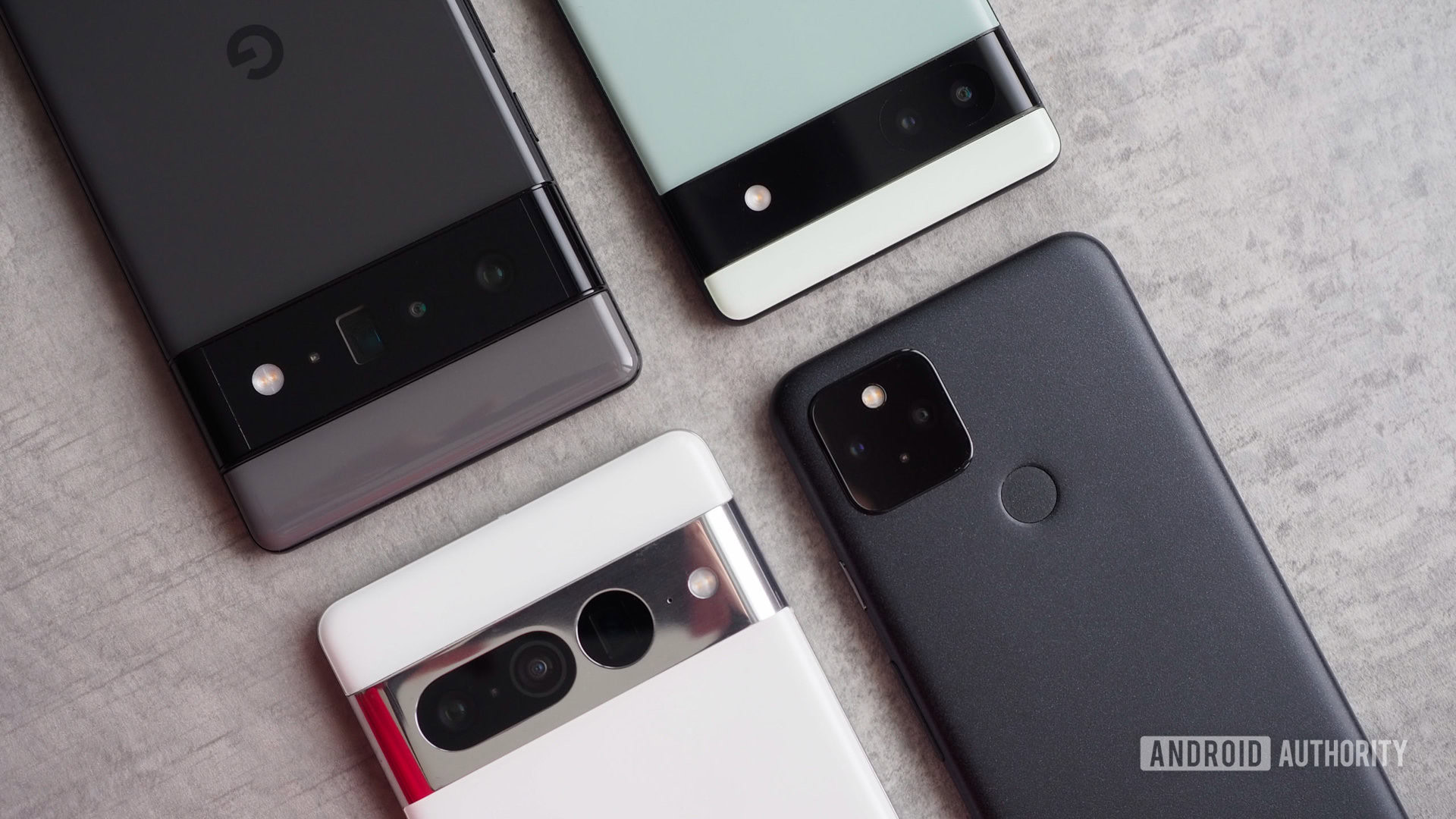
All Samsung Galaxy Buds work on Android, and you still get plenty of features when pairing your Galaxy Buds to a non-Samsung Android phone. That said, there are some Samsung-exclusive features you may want to know about before buying a pair of Galaxy Buds.
- Automatic device switching: When you connect Samsung Galaxy Buds to a Samsung phone, any devices under that Samsung account will recognize the earbuds. Further, your earbuds will switch between your Samsung devices automatically. You won’t need to dig through your tablet or phone’s Bluetooth settings to change sources.
- Samsung 360 Audio and head tracking: The Galaxy Buds Live, Buds 2, and Buds 2 Pro all work with Samsung 360 audio on a device running One UI 3.1+. Head tracking only works on the Galaxy Buds 2 Pro and a compatible streaming service. Many music apps support spatial audio on any headphones at no extra cost (e.g., Apple Music, Amazon Music, and Tidal). To experience it on video streaming platforms, you’ll need to subscribe to Disney Plus, Netflix, or HBO Max, to name a few.
- 360 Audio recording: This feature only works with the Galaxy Buds 2, Buds Pro, and Buds 2 Pro. When paired to a Samsung S23, Flip 4, Fold 4, Flip 5, Fold 5 running One UI 5.0+, you can record 360-degree audio with your videos.
- 24-bit audio from the Samsung Seamless Codec: You can only get 24-bit Bluetooth audio when pairing the Samsung Galaxy Buds 2 Pro to a Samsung device running One UI 4.0 or later.
- Hands-free Bixby access: For direct “Hey, Bixby” access from your Samsung Galaxy Buds, you’ll need to pair them to a Samsung phone. You can access other smart assistants like Siri or Google Assistant when paired with an Android phone, but this requires using the buds’ touch controls.
- Wireless PowerShare: Wirelessly charge your Samsung Galaxy Buds case by placing it on top of a compatible Samsung device. This doesn’t work with non-Samsung Android phones. However, anyone can use a Qi wireless charging mat with the Galaxy Buds cases.
What are some good Galaxy Buds alternatives?
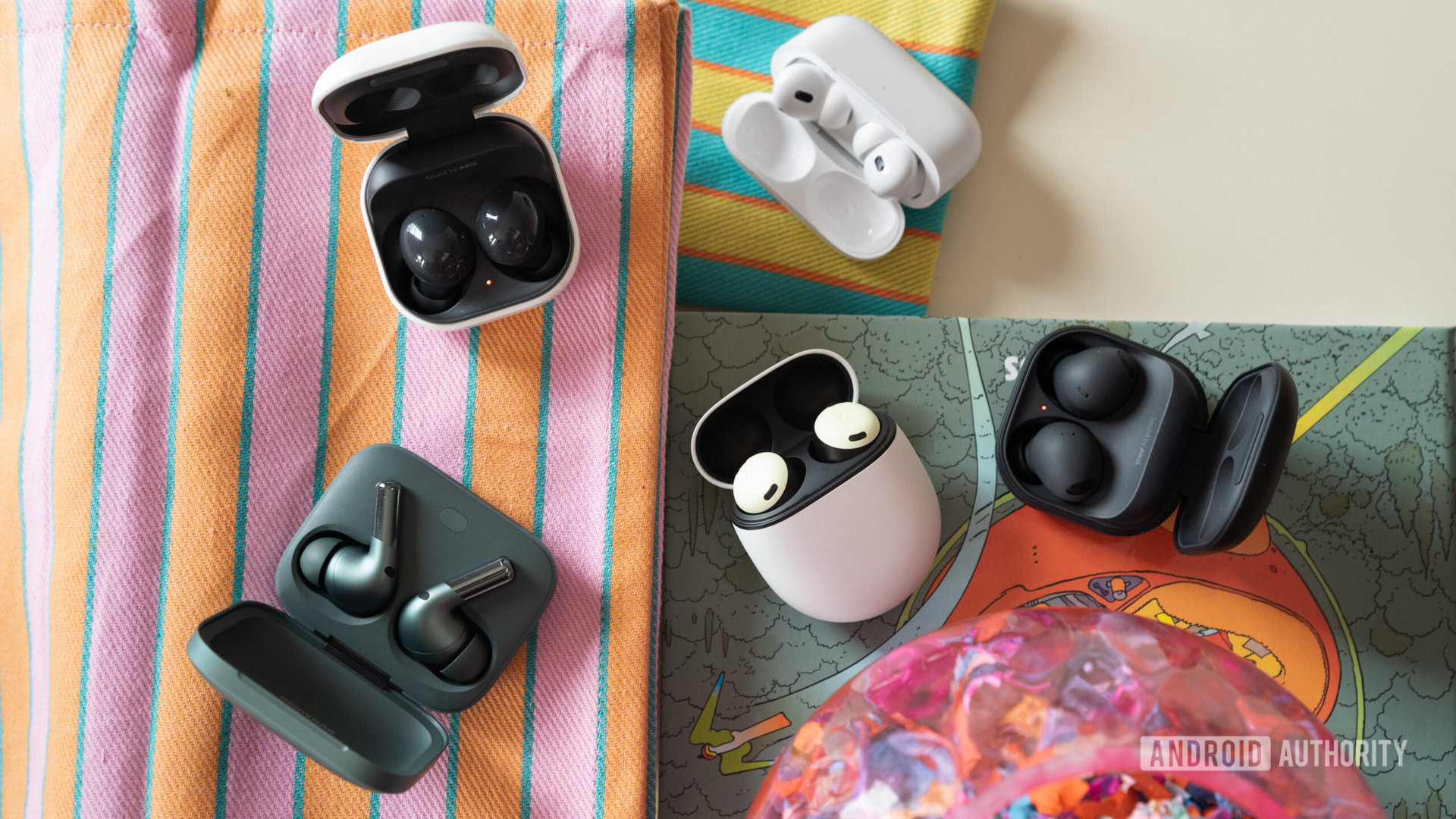
Even if you love the Samsung Galaxy Buds 2 Pro, Buds 2, and Buds Live, you may not be ready to hit purchase. We welcome you to peruse several alternative earbuds that fit the bill and give Samsung some real competition.
Samsung Galaxy Buds 2 Pro and Galaxy Buds 2 alternatives
- Sony WF-1000XM5 ($298 at Amazon): These are some of the best ANC earbuds around. Sony’s buds deliver a thoughtful user experience and compare favorably against the Galaxy Buds 2 Pro. Sony’s flagship earbuds work well across hardware and operating systems. Sony’s custom EQ works on any smartphone, as does head tracking for spatial audio content. Tinkerers who want endless customization options won’t mind springing for these buds.
- Google Pixel Buds Pro ($199 at Amazon): These pocketable buds come in an egg-shaped charging case and have very good ANC. You get tight integration with Google’s hardware and software; the experience is similar across Android. The sound quality is a bit wonky, but any Android device can experiment with Google’s five-band EQ. You get spatial audio with head tracking, though the latter is reserved for Pixel 6 and Pixel 7 phones.
- Beats Fit Pro ($159 at Amazon): Apple owns Beats, but the Fit Pro offer a similar experience on Android as they do on iOS. The flexible wing tips allow you to exercise without worrying about the buds falling out. The IPX4 water-resistant rating keeps the buds protected from sweat and water splashes. When fellow gym-goers’ grunts get too distracting, turn noise canceling on. ANC on the Fit Pro is better than the Buds 2, but not quite as good as the Buds 2 Pro.
- AirPods Pro (2nd generation) ($239 at Amazon): We’d be remiss to omit the AirPods Pro 2 for iPhone owners. These AirPods have some of the best noise canceling available and integrate with Apple devices. You get personalized Spatial Audio, voice access to Siri, and Adaptive Transparency mode. The latter works like Samsung’s ambient aware mode but lessens the impact of harsh, unpredictable sounds as they occur. The AirPods Pro (2nd gen) are only worth buying for iPhone owners.
Samsung Galaxy Buds Live alternatives
- Sony LinkBuds WF-L900 ($178 at Amazon): Like the Galaxy Buds Live, you’ll hear your environment and music at the same time. These donut-shaped earbuds leave your ear canals exposed to the world. Sony’s earbuds merit a durable IPX4 rating and use larger wing tips, making them better for exercise. Sony’s LinkBuds have a good microphone system that isolate the speaker from ambient noise.
- Nothing Ear Stick ($64 at Amazon): Nothing’s earbuds come in a tube-like carrying case that gives it a unique look. The earbuds themselves look like AirPods and fit like them too. The buds won’t isolate you from the world around you and will nestle comfortably into your ears. We like how the Nothing X app lets you create a custom EQ. For less than $100, these buds are a great deal.
- Apple AirPods (3rd generation) ($195 at Amazon): iPhone owners who want to be unplugged while plugged into their music should get these unsealed earbuds. Apple refined its universal fit so they stay in place a bit better. With a case and buds that all have an IPX4 rating, these AirPods are ready to take on anything. If you own many Apple products, you can use exclusive features like automatic device switching and Apple Find My.
Where to buy Samsung’s earbuds
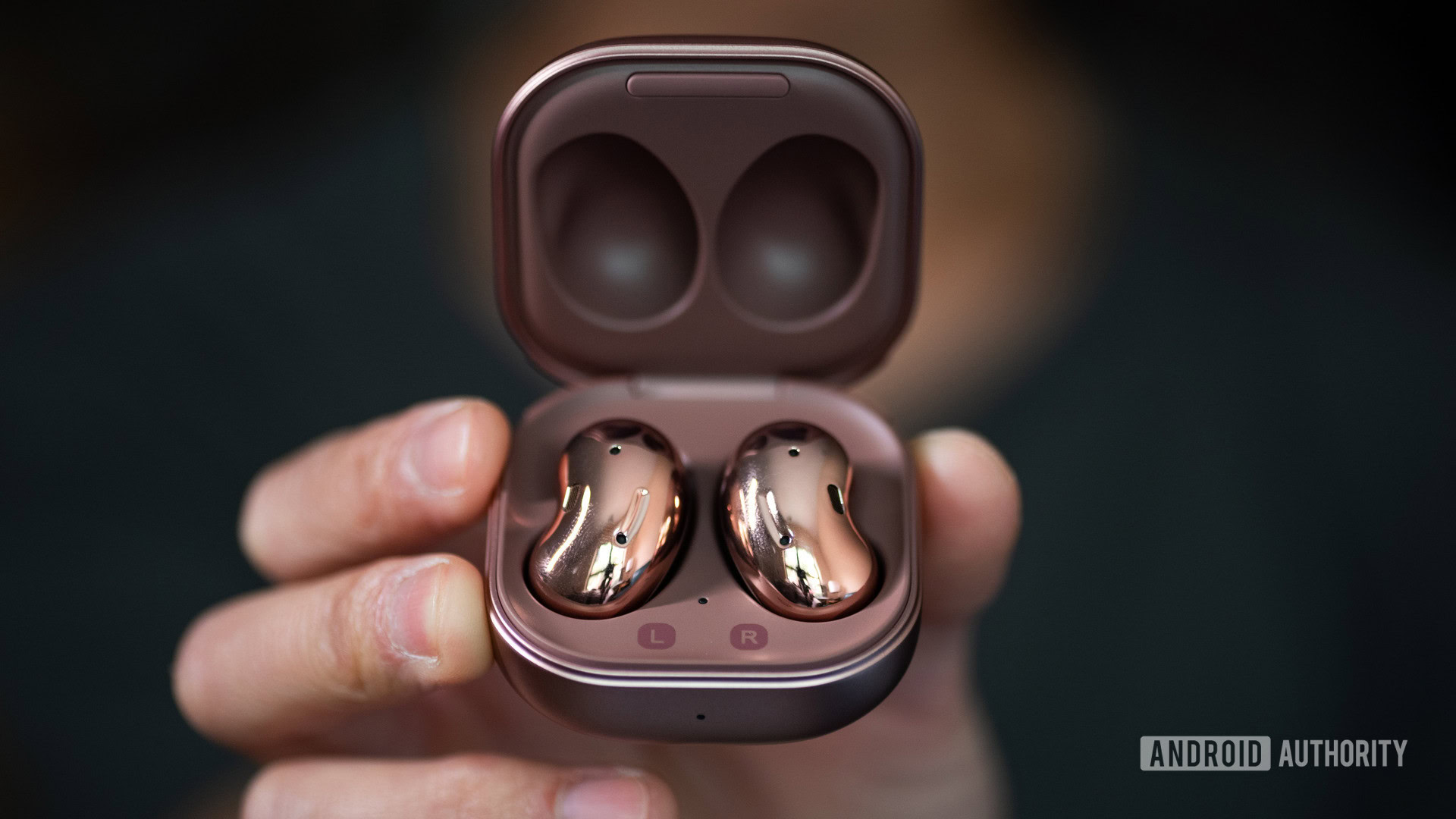
- Samsung Galaxy Buds 2 Pro: $229 / £219 / AUS $349
- Samsung Galaxy Buds 2: $149 / £139 / AUS $219
- Samsung Galaxy Buds Live: $149 / £139 / AUS $249
You can purchase the Galaxy Buds 2 and Buds 2 Pro from Samsung’s website. However, the Galaxy Buds Live are no longer available for purchase directly from Samsung. Venturing beyond Samsung’s site, you can find these earbuds and some of the discontinued models from big box stores and popular online vendors. The availability of older, outdated models depends on your region.
Samsung’s Galaxy Buds are in the US, UK, Canada, Australia, Germany, Japan, South Korea, and more.

Enhanced noise-cancelling technology
Satisfying battery life

In-app ear tip fit test
Sound quality

Fast charging
Excellent microphone
Top Samsung Galaxy Buds questions and answers
If you own a Samsung device or Android smartphone, the Samsung Galaxy Buds 2 Pro are worth the purchase. In addition to offering up to 50dB of noise canceling, users receive pleasing sound quality, Samsung 360 Audio with head tracking, automatic device switching, and wireless charging.
This is subjective based on your personal preferences. However, the Galaxy Buds 2 are good all-around earbuds. The updated Buds 2 Pro share similar battery life, sound quality, and fit. The main upgrade you receive with Samsung’s flagship buds is improved noise canceling, touch sensitivity, and immersive audio capability.
Yes, the Galaxy Buds 2 Pro are noise canceling earbuds. They have some of the best noise canceling capabilities on the market, attenuating frequencies below 100Hz by nearly 50dB.
No true wireless earbuds are fully waterproof. However, the IPX7 water-resistant rating of the Galaxy Buds 2 Pro should protect the earphones from submersion in up to 1m of water for up to 30 minutes.
The Galaxy Buds 2 Pro has the best overall microphone quality out of all of Samsung’s earbuds line. This is especially true in windy conditions, where the buds quell intrusive environmental sounds far more than their more pedestrian kin.
Given that the Buds 2 Pro can easily be found on sale, it may be worth upgrading. For the added price, users receive better ANC, touch controls, isolation, and 360 Audio with head tracking,